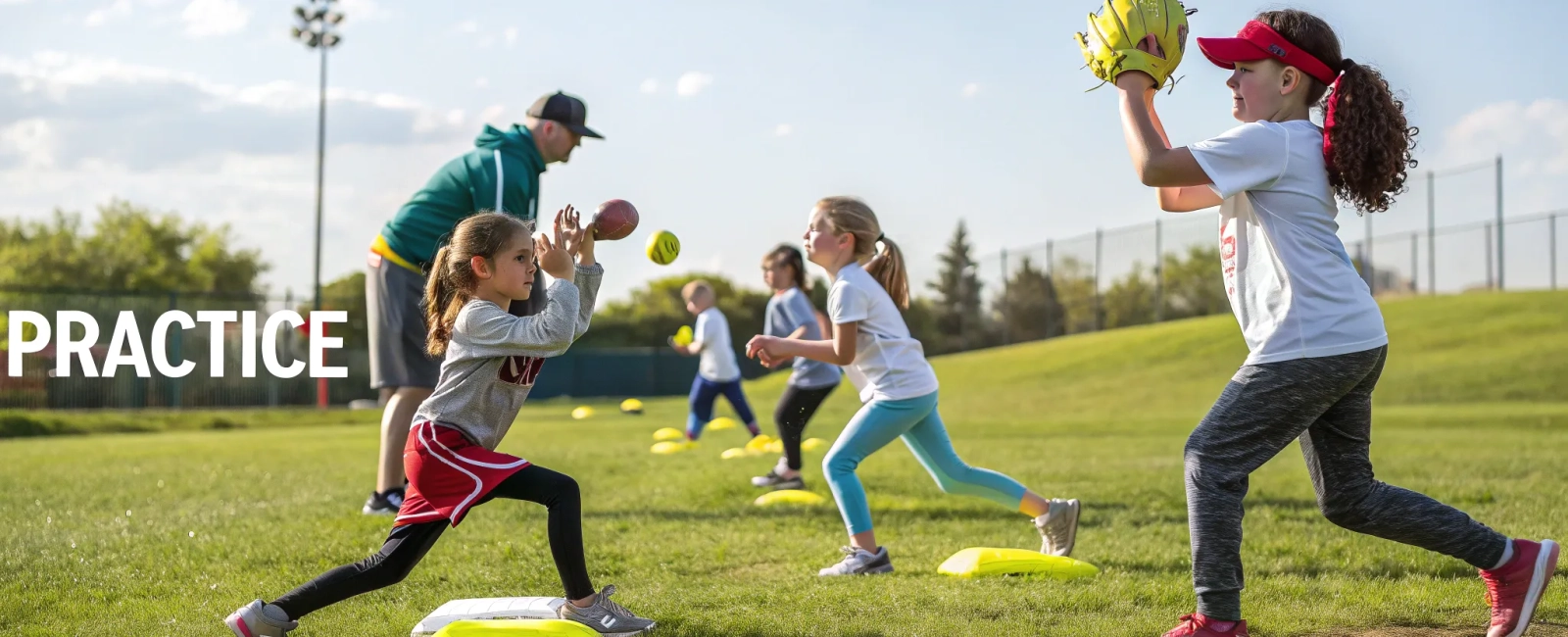Consistency is Key: Shaping Young Softball Stars

Ever notice how some kids seem to click into gear the second they step onto the field? Like they’ve got some secret playbook the rest of us missed? Spoiler: It’s not magic. It’s routine. Not the boring, chore-checklist kind, but the type that turns raw skill into something that sticks—like gum on a hot dugout bench. Let’s talk about why sticking to the grind (yes, even when it’s tedious) does more than polish fastballs. It builds kids who know how to show up—for themselves and their team.
1. Why Routine Isn’t Just About Showing Up
Think of practice habits like seasoning a cast-iron skillet. Do it right, and everything cooks better. Do it half-heartedly? Well, good luck scraping off the rust. Research shows that young players who train lower-body strength relative to their size—not just lifting heavy weights—improve agility and power faster. Translation: It’s not about being the strongest kid out there. It’s about building strength that works for their body. Exercises like hex-bar deadlifts (the kind where you lift from a hexagonal frame) help pitchers generate force without straining joints. But here’s the kicker: Doing these drills sporadically won’t cut it. Consistency turns “I can’t” into “I did.”
And let’s squash the myth that fundamentals are for rookies. Ever watch a 12-year-old rifle a throw to home plate with the precision of a GPS? That’s not luck. It’s hours of repeating the same mechanics until muscle memory takes over. One study found that players who drilled basics like throwing and catching early were 30% less likely to develop errors under pressure. Why? Because when your brain doesn’t have to think about how to field a grounder, it can focus on where to throw it. Parents, this means resisting the urge to let your kid skip “boring” drills. Those reps are the glue holding their game together.
2. The Hidden Perks of Predictability (Yes, Really)
Routine gets a bad rap for being dull. But here’s the twist: Predictability breeds confidence. Take injury prevention. Less than half of coaches weave injury drills into practices, but the ones who do see players bounce back faster—and stay healthier. Simple stuff like balance exercises or rotator cuff stretches, done regularly, can cut down on overuse injuries by nearly 40%. It’s like brushing teeth: Skip it, and things get messy fast.
Now, let’s talk vibes. Ever seen a kid crumble after striking out? (Who hasn’t?) Blending positivity into routine is like adding sprinkles to oatmeal—it makes the mundane bearable. Teams that kick off practice with “highlights” (e.g., sharing one thing they’re grateful for) report higher resilience during slumps. Why? It’s harder to quit when you’re wired to look for wins, even tiny ones. Coaches: Try swapping generic pep talks for specific praise. Instead of “Good job,” aim for “Love how you adjusted your grip on that last pitch.” Specificity sticks.
3. Building More Than Athletes
Here’s the dirty secret: Sports don’t build character. Routines do. Think about it. Showing up daily, pushing through drills when you’d rather be anywhere else—that’s not just training the arm. It’s training the mind. Studies on youth athletes show that those with structured coping skills under stress develop better. They’re less likely to see pressure as a threat and more as a “let’s do this” moment. Why? Because routine teaches them to trust their prep.
But there’s a trap here: Identity. Kids who tie their self-worth to sports stats? They’re playing Jenga with their mental health. Routines should include off-field habits too—homework before practice, family dinners, hobbies. Balance reminds them they’re more than a batting average.
The Takeaway
Routine isn’t a cage. It’s a roadmap. Want proof? Look at the kid who shaves seconds off her sprint time because she never misses leg day. Or the pitcher who stays cool during a bases-loaded jam because he’s rehearsed that exact scenario 100 times. These aren’t flukes. They’re the product of showing up, even when it’s inconvenient.
So, parents: Fight the urge to chase the shiny new training trend. Double down on the basics. Celebrate the small wins. And remember—the goal isn’t to raise all-stars. It’s to raise kids who know how to put in the work, long after the cleats come off.
Because here’s the truth: Champions aren’t born. They’re built—one grounder, one sprint, one boring practice at a time.
